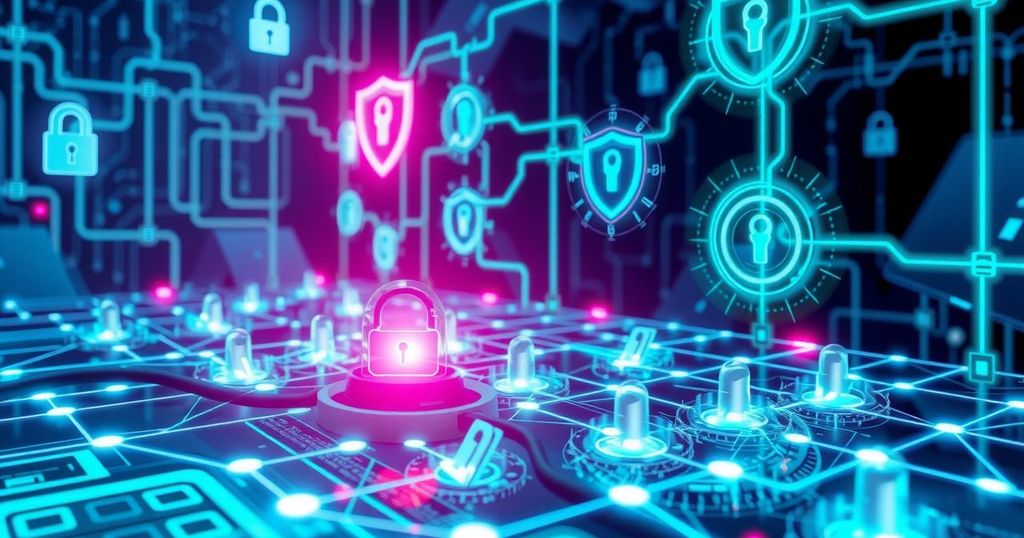Navigating the AI Landscape in UK Energy: Opportunities and Risks Ahead
The integration of AI into the UK’s energy sector is fraught with risks, particularly misinformation and cyberattacks. Power outages already cost the economy billions, highlighting the need for robust cybersecurity and training. Investment in technology and skilled labor is essential to secure energy infrastructure and prevent crippling failures in the future.
The integration of artificial intelligence (AI) within energy infrastructure is becoming a double-edged sword for the UK. On one hand, as the country leans more on digital networks for energy delivery, risks of misinformation and cyberattacks spike. A recent alarming incident, like a substation fire leading to the closure of Heathrow Airport, highlights how outages can create a domino effect of significant consequences for individuals and society alike.
When we talk about the impact of a blackout, especially a nationwide one lasting just a day, potential losses can escalate into the billions. Reports suggest that in just a single day without power, the cost could soar to unimaginable heights. During 2023 and 2024 alone, the UK saw a staggering £17.6 billion loss in economic output due to connectivity issues, leaving businesses submerged with average losses exceeding £11,000.
These outages, even though they were just short disturbances, are harbingers of a more alarming reality. If a blackout were to linger for days on end, we could be looking at economic damages reaching into the tens of billions. The fallout would stretch from supply chain calamities to plunging hospital operations and widespread business closures. Therefore, sinking funds into cybersecurity and enhancing network resilience now seems more crucial than ever to avoid a future of financial ruin.
What’s even more concerning is the increasing number of connected devices in our energy infrastructure. These openings might leave vital systems vulnerable to manipulations via misinformation or erroneous data, which could blind them toward looming issues like equipment malfunctions or shortages. Cyber attackers could use AI to launch misinformation campaigns, compromising grid operations. If hackers gain the upper hand through manipulated AI data, this could spell disaster, possibly handing them the reins to critical infrastructure or confidential information.
Addressing these issues means ensuring that AI systems are not only robust and transparent but also subject to rigorous validation processes. Developers deserve tools and frameworks ensuring these systems meet safety standards. Equally important is the need for widespread training on all levels of AI awareness, tailored to individual organizational roles. It’s a tough landscape right now, as companies face a shortage in manpower skilled in cybersecurity.
To navigate these challenges, the new Growth and Skills Levy could play a crucial role, particularly for smaller businesses. This flexible funding might help reskill existing employees with short, targeted courses to ensure safety and competency across varying levels. Meanwhile, cybersecurity roles at higher expertise levels may need to gain special protections—like securing the status of a “medical doctor”—to elevate standards and attract talent.
Yet it’s not all doom and gloom. By effectively combining AI with technologies like digital twins—virtual models mimicking real-world systems—energy providers can enhance monitoring for faults and boost overall resilience. Implementing a holistic approach, where the government fosters cooperation among various digital twins in critical energy infrastructures, could lead to a unified system monitoring energy generation, transmission, and consumption, further securing the UK’s energy supply.
But here’s the kicker: we can’t achieve these technological strides without a workforce equipped to utilize and maximize them. Alarmingly, research shows that only a tiny fraction (about 5 percent) of UK’s engineering firms don’t prioritize digital twins for achieving net-zero goals, with most employers doubting the adequacy of existing skills in areas like data analysis.
As AI finds its way into our energy systems, the stakes are high. The potential for bolstering security is immense, but the risks of system failures—whether through negligence or targeted attacks—remain a significant concern. Reaping the advantages of these innovations means ensuring workers are not just trained, but equipped with a thorough understanding of AI’s safe and effective use, paired with investment in robust cybersecurity efforts. The clock is ticking, and the need for comprehensive regulation and well-trained personnel has never been more pressing.
In summary, the integration of AI into the energy infrastructure poses both risks and opportunities. With potential losses from blackouts making headlines, investment in cybersecurity and workforce training is vital. Ensuring that AI systems are robust and effective, while simultaneously building a skilled workforce, will protect the UK’s energy future. Without immediate action, we risk facing dire consequences from misinformation and cyber threats.
Original Source: www.newstatesman.com




Post Comment